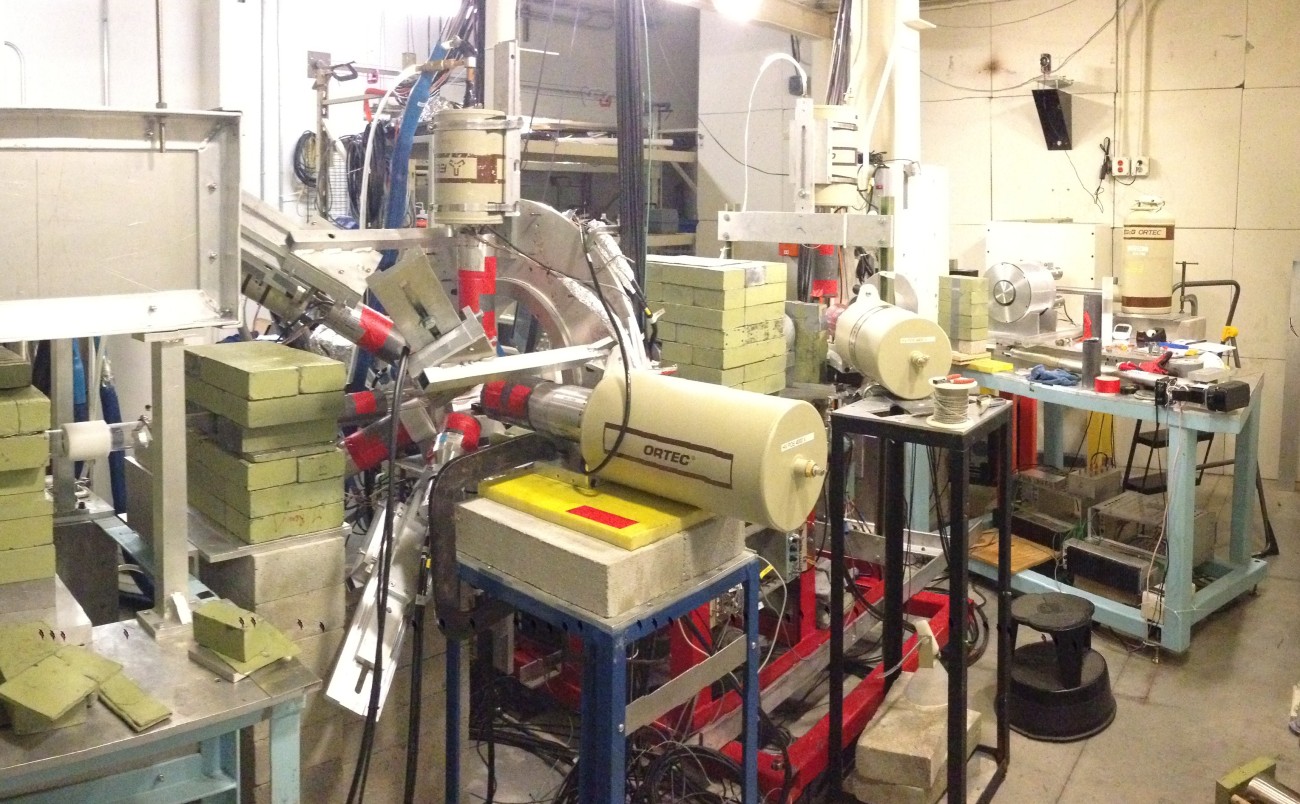Nuclear Structure Physics
The complex nuclear many-body system can assume under the complex nuclear forces collective nuclear quantum states to which many nucleons contribute in a coherent fashion. Such collective structures can exhibit astonishing regularities and simple pattern despite of the complex nuclear forces that are responsible for their formation.
Examples are collective vibrations of nuclei or rotational sequences of spatially deformed nuclear quantum states.
We study the properties of collective vibrations and rotations of nuclei with particular emphasis of their evolution as a function of the number of protons and neutrons forming the atomic nuclei. We conduct spectroscopic experiments to discover hitherto unknown properties of such collective nuclear states by using electron-scattering techniques at our in-house electron accelerator S-DALINAC or by using the method of gamma-ray spectroscopy at ion-accelerator facilities world-wide. We interpret our results in terms of phenomenological nuclear models that we develop further for an improved quantitative insight into the properties of atomic nuclei.
Atomic nuclei are formed by a sufficiently small number (< 300) of nucleons, i.e., protons and neutrons, such that a single nucleon can make a substantial contribution to the behaviour of the entire nucleus and to the properties of its excited states. This aspect is further enhanced by the fermionic quantum character of the nuclear system which leads to the formation of nuclear shell structure.
We investigate the role of single-particle effects on the properties of the nuclear quantum system in stable and in radioactive nuclei by using electron-scattering techniques at our in-house electron accelerator S-DALINAC or by using the method of gamma-ray spectroscopy at ion-accelerator facilities world-wide.
Our results contribute to an improved quantitative understanding of the nuclear quantum system.
We further contribute to the developments of improved experimental techniques for quantitative research on nuclear single-particle properties.
The atomic nucleus formed by protons and neutrons represents the prime example of an isolated strongly-interacting two-fluid quantum system. Generic features are shell structure, collectivity and the isospin degree of freedom.
We are the world-leading group for experimental research on proton-neutron mixed-symmetry states (MSSs). The properties of MSSs and other isovector valence shell excitations are simultaneously sensitive to all three of these fundamental features of atomic nuclei and, hence, are a most appealing object of nuclear-structure research.
We have recently reviewed the status of the word-wide experimental information about MSSs of vibrational nuclei.
We study MSSs by using electron-scattering techniques at our in-house electron accelerator S-DALINAC or by using the method of gamma-ray spectroscopy at ion-accelerator facilities world-wide.


